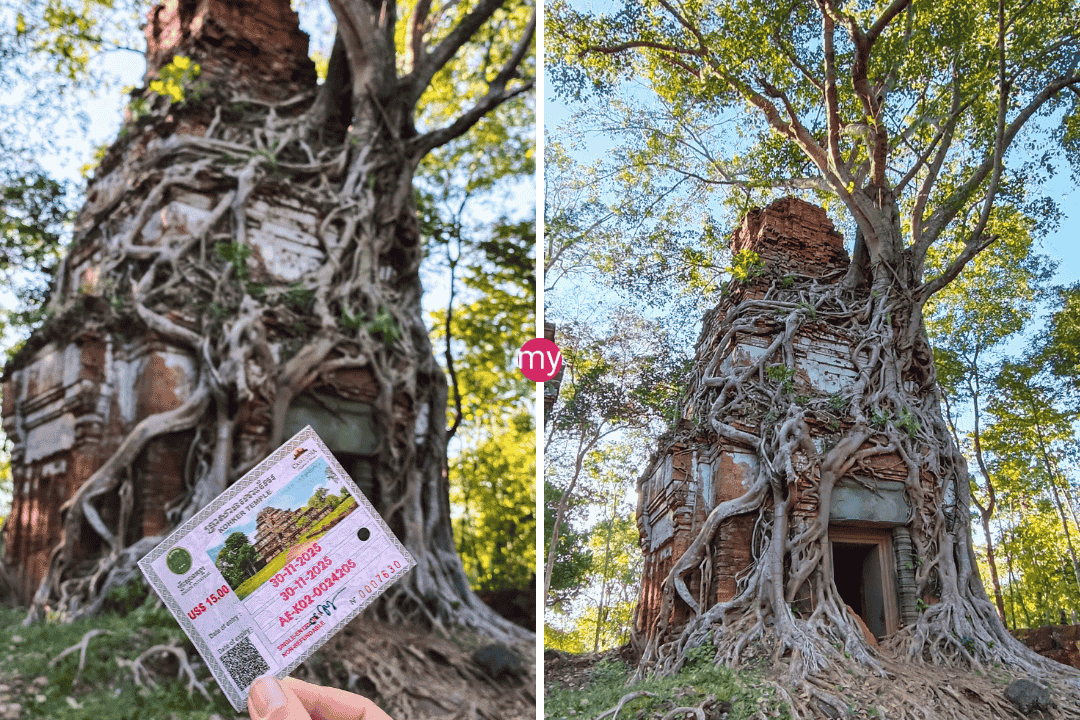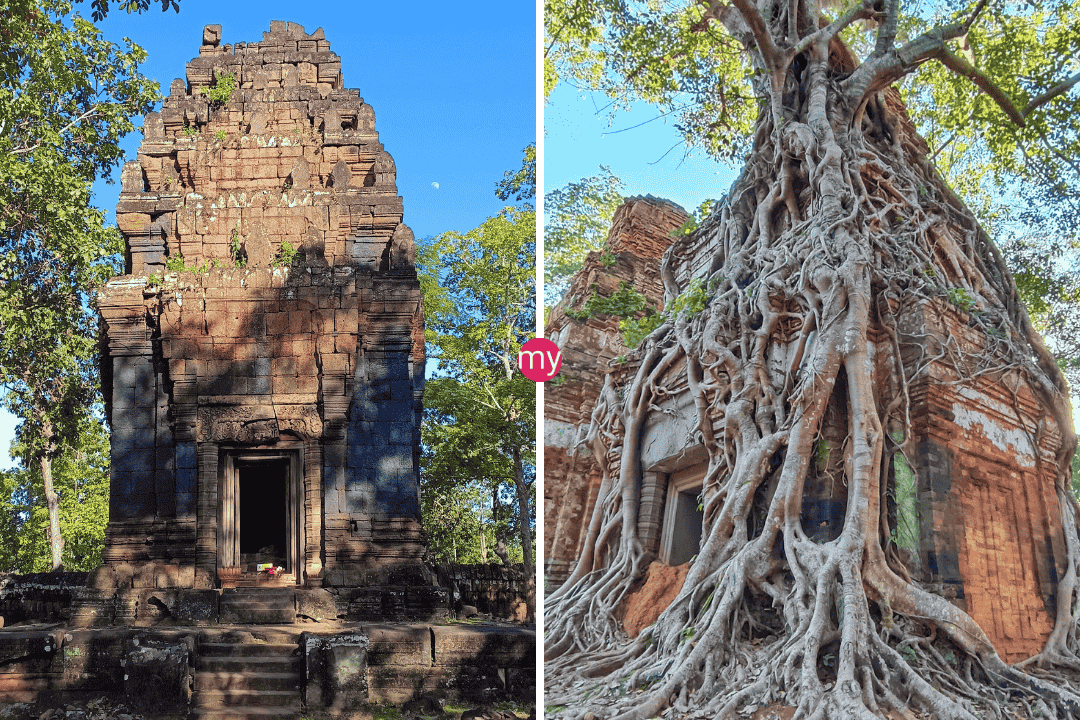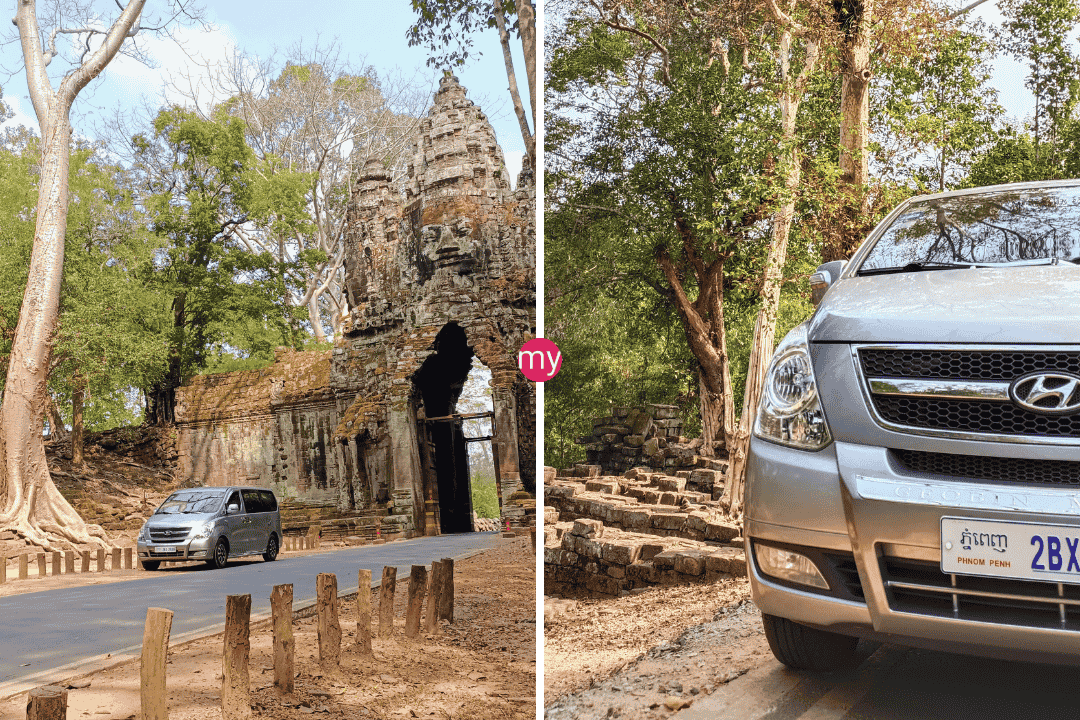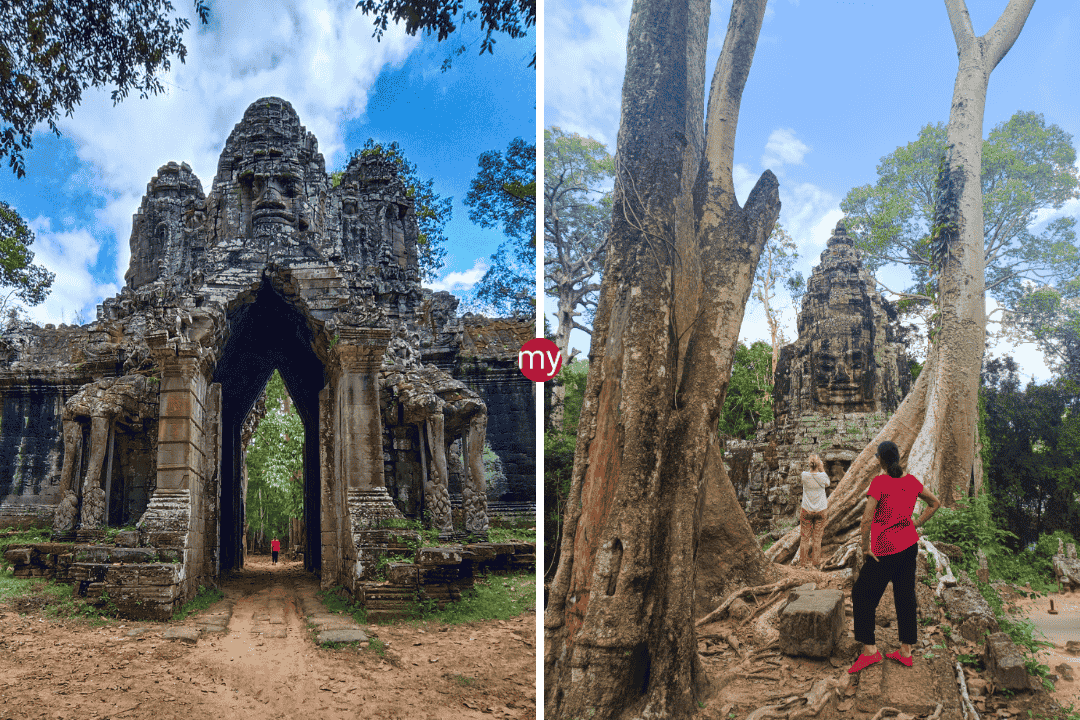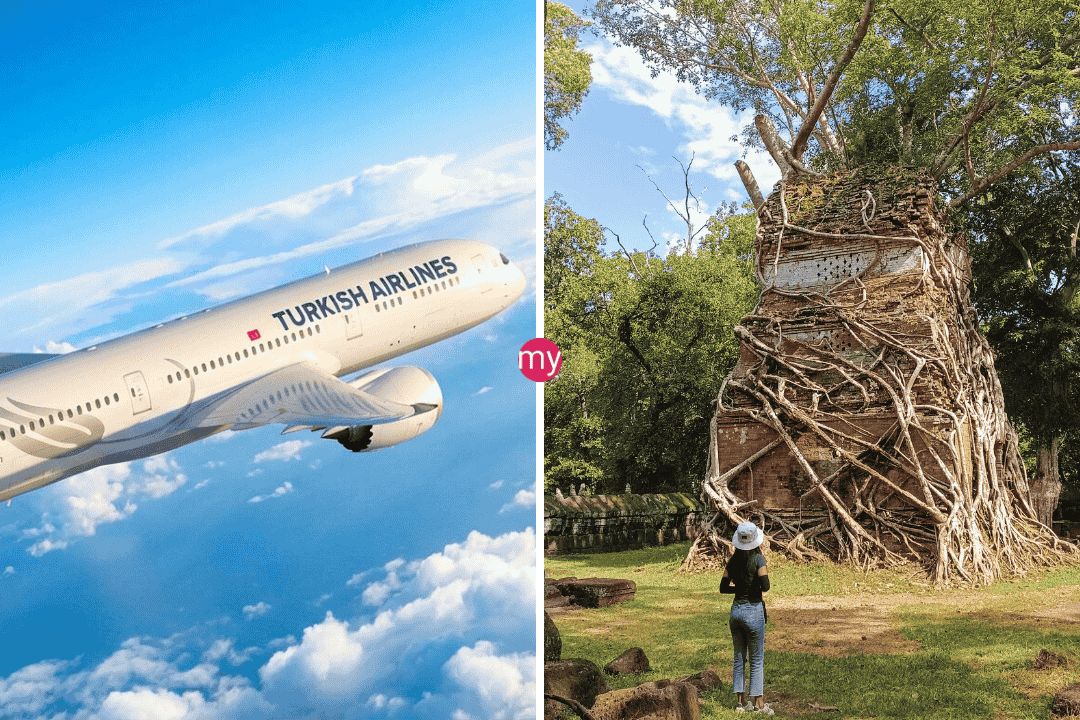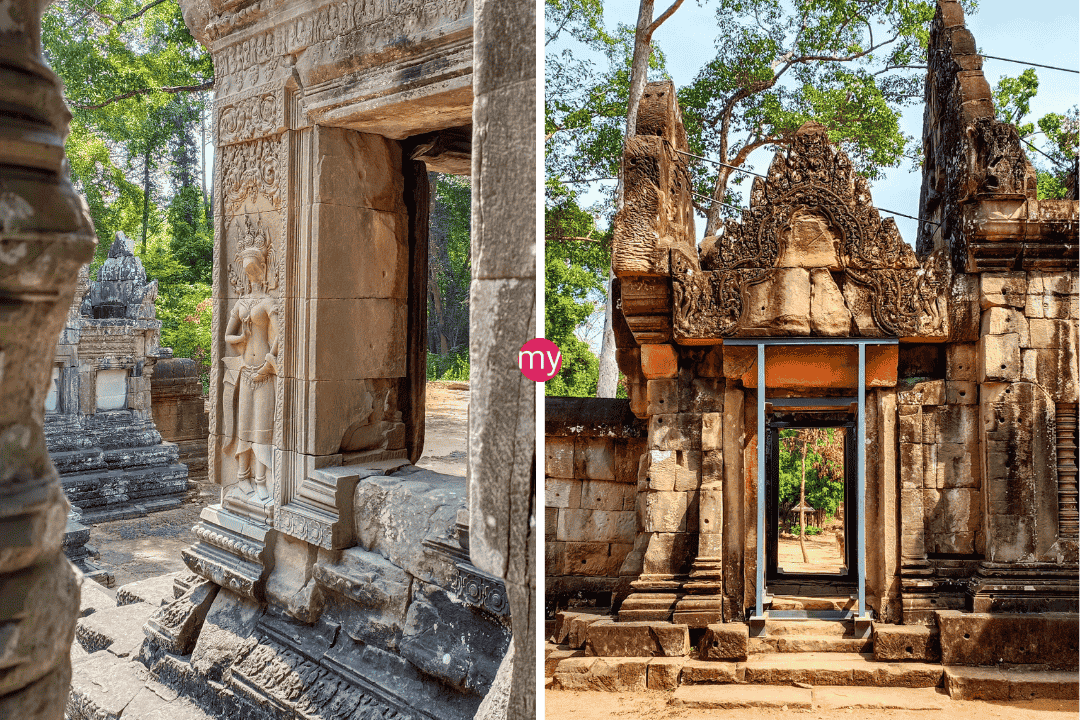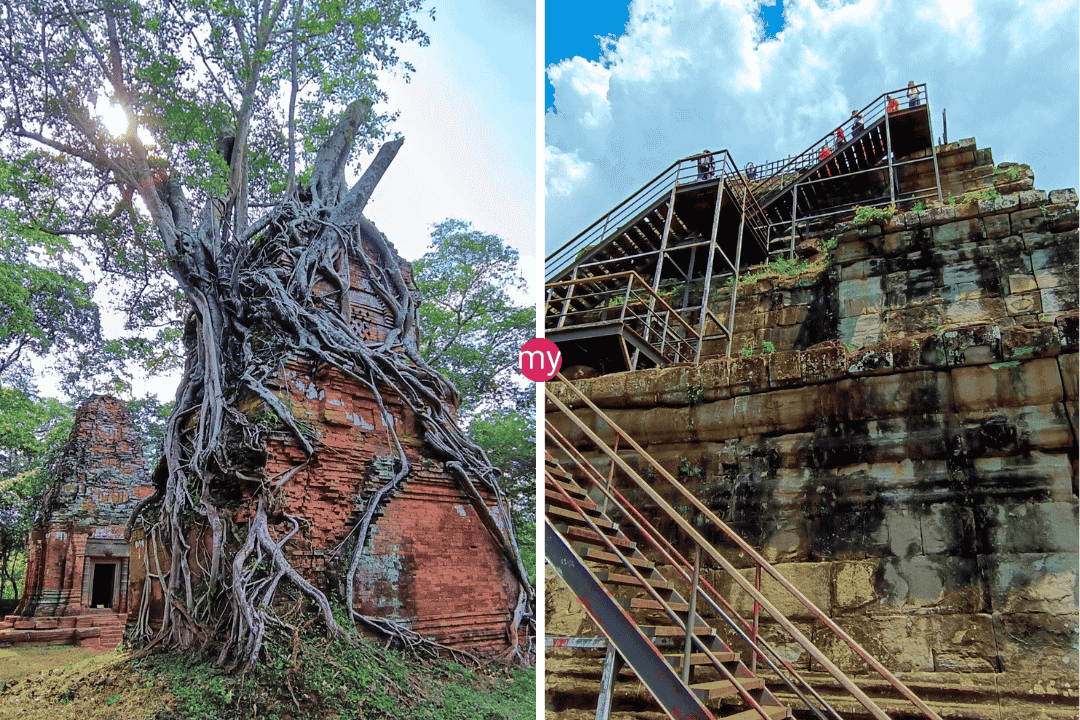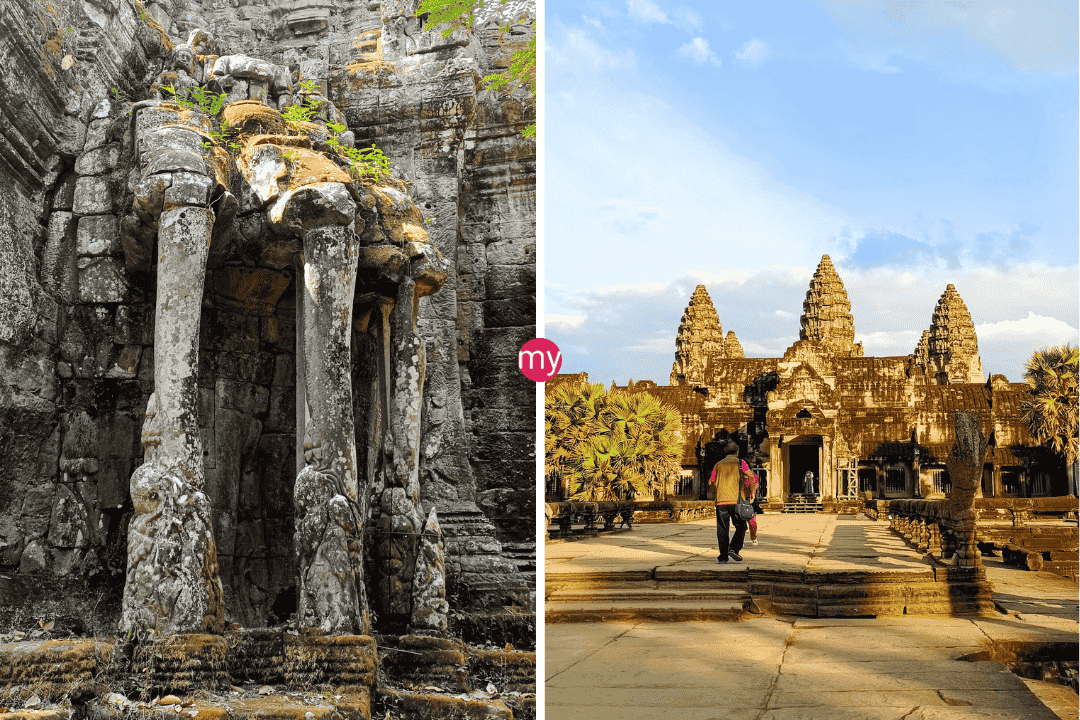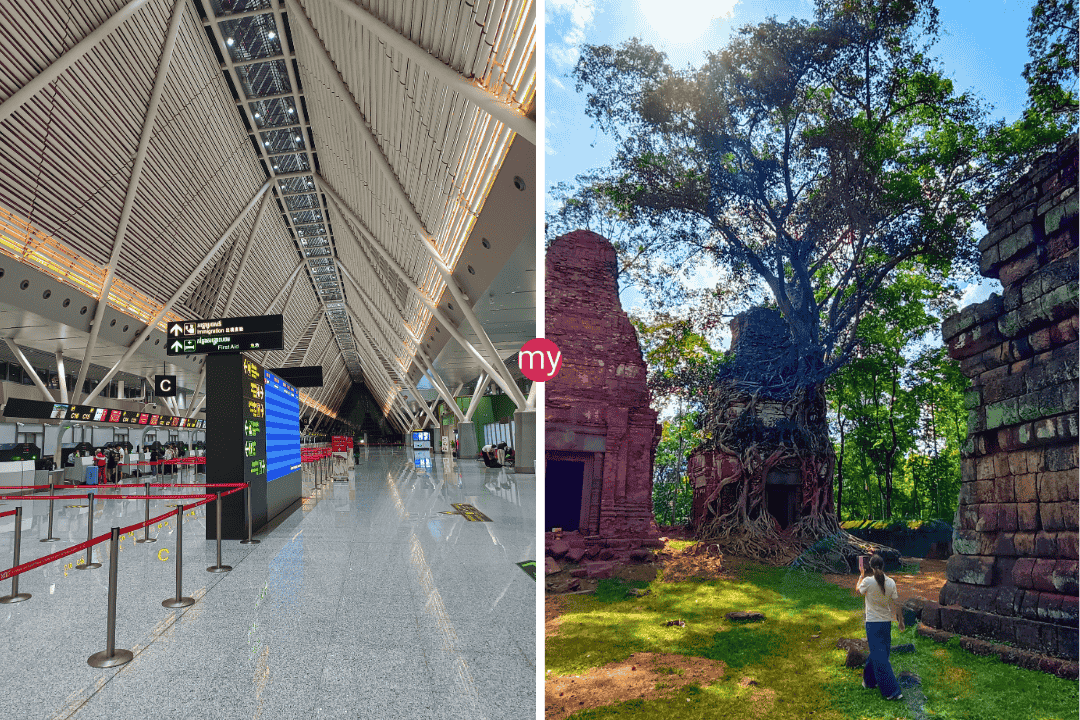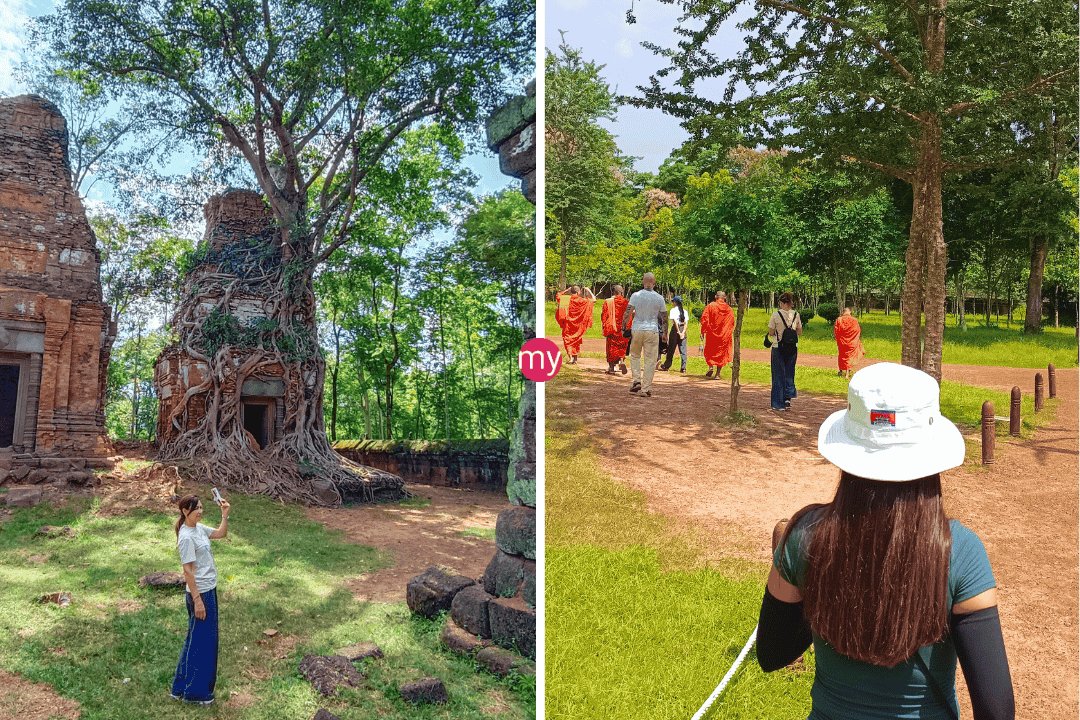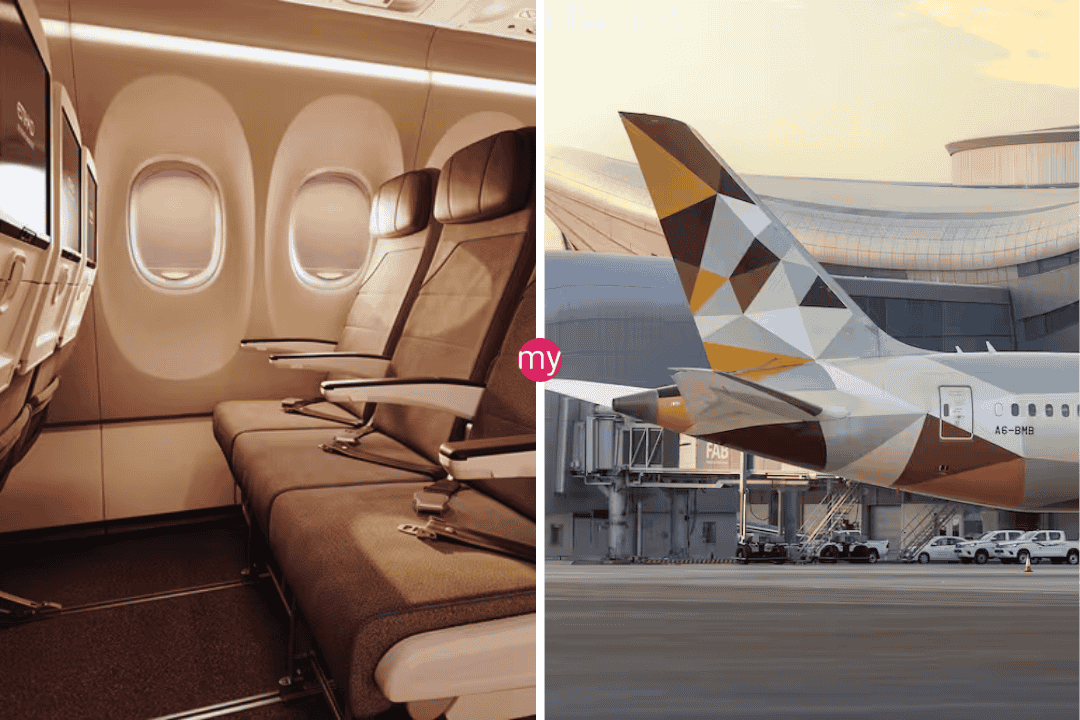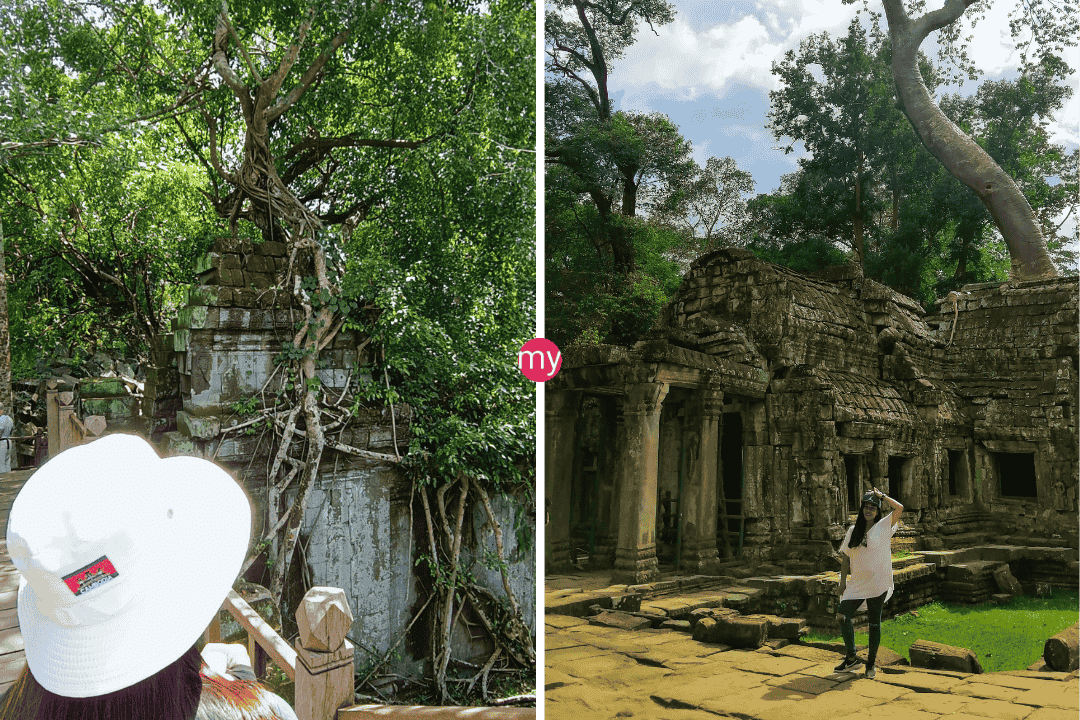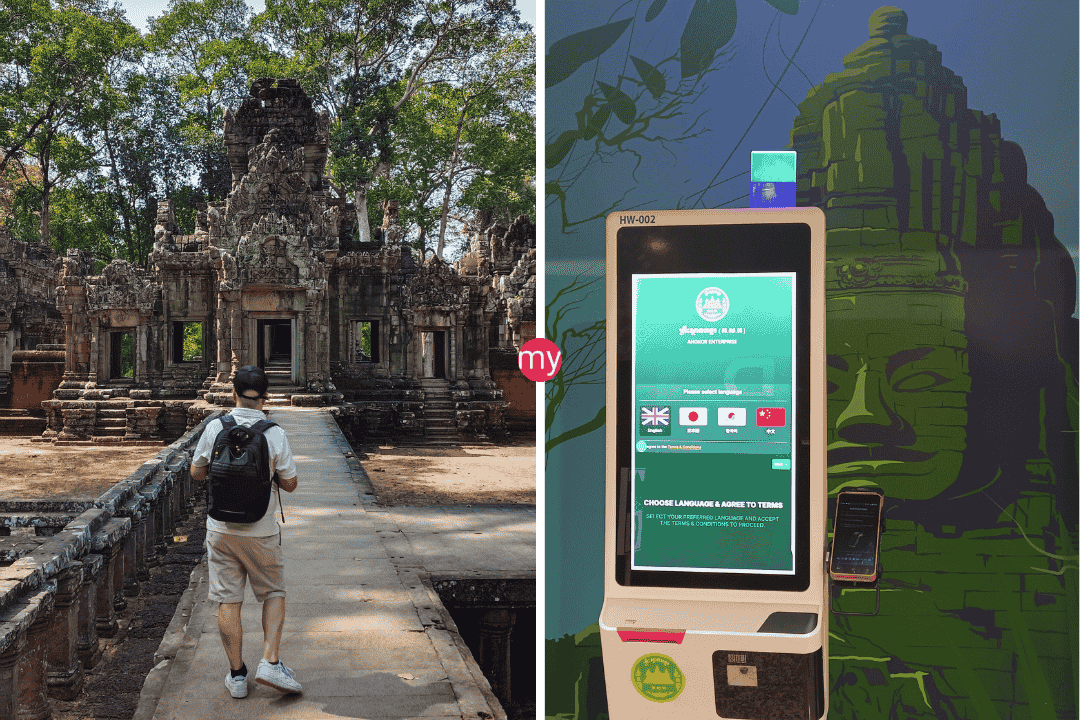5 Architectural Wonders of East Mebon Temple - Khmer Empire's Island Sanctuary Decoded
Ever wondered what secrets lie hidden within the crumbling stones of an ancient Khmer temple?
The East Mebon Temple isn’t just another pile of old rocks – it’s a time machine that’ll transport you back to the golden age of the Khmer Empire!
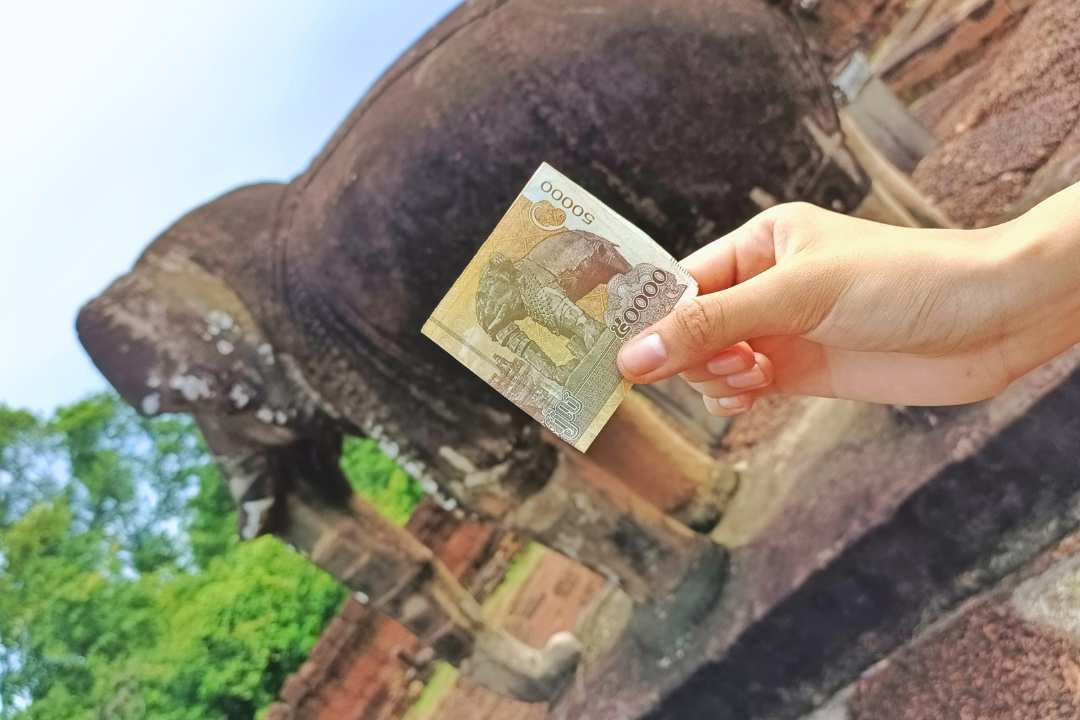
This island sanctuary, once surrounded by the waters of a massive reservoir, holds mysteries that’ll make your jaw drop.
Did you know that giant elephant statues guard its corners, or that its unique design mimics a sacred mountain?
The East Mebon isn’t just a pretty face – it’s a masterpiece of engineering that’s survived nearly a thousand years of nature’s wrath.
Get ready to have your mind blown as we uncover the architectural wonders that make this temple a must-see on any Angkor adventure!
Exploring the Intricate Majesty of a Forgotten Temple
Here’s a quick rundown of the 5 architectural wonders you’ll discover at East Mebon Temple:
- Mountain-inspired design: The temple’s unique three-tiered structure mimics Mount Meru, the sacred mountain in Hindu mythology.
- Elephant guardians: Massive stone elephants stand at each corner of the temple’s levels, serving as both decorative and symbolic protectors.
- Innovative water management: The temple’s location on an artificial island showcases the Khmer’s advanced hydraulic engineering skills.
- Intricate carvings: Delicate stone reliefs and sculptures adorn the temple, depicting gods, mythical creatures, and scenes from Hindu epics.
- Precise astronomical alignment: The temple’s layout aligns with celestial bodies, demonstrating the Khmer’s deep understanding of astronomy.
Now, let’s dive deeper into each of these architectural marvels!
Picture this: You’re standing on an ancient island, surrounded by what used to be a massive man-made lake. The sun beats down on your face as you gaze up at a towering structure that’s stood the test of time for nearly a millennium. Welcome to East Mebon Temple, folks!
This isn’t just any old building – it’s a testament to the incredible skill and vision of the Khmer Empire. Built way back in the 10th century by King Rajendravarman II, East Mebon was designed to be a Hindu temple dedicated to Shiva. But here’s the kicker: it wasn’t just a place of worship. Oh no, it was also a clever way to control the waters of the Eastern Baray, a massive reservoir that kept the Angkor region flourishing.
Dr. Emma Watson, a renowned archaeologist specializing in Khmer architecture, puts it this way: “East Mebon is a prime example of how the Khmer integrated religious symbolism with practical engineering. It’s not just a temple – it’s a feat of hydraulic ingenuity.”
Editor’s Note: This article was last updated on July 7, 2024, by our team of local Siem Reap experts. We regularly review and update our content to ensure accuracy and provide the most current information for our readers.
1. Mountain-inspired Design: A Stairway to Heaven
Ever heard of Mount Meru? In Hindu mythology, it’s the center of the universe and home of the gods. Well, guess what? The clever Khmer architects decided to bring a little bit of that heavenly mountain right here to earth!
The East Mebon Temple is built in a pyramid-like structure with three tiers. Each level gets smaller as you go up, creating a visual effect that makes you feel like you’re climbing towards the sky. It’s not just for show, either. This design has some serious symbolic meaning.
Professor Chandra Patel, an expert in Hindu iconography, explains: “The three-tiered structure of East Mebon represents the three realms of the universe in Hindu cosmology – the world of humans, the world of ancestors, and the world of gods. As visitors ascend the temple, they’re symbolically moving from the earthly realm towards the divine.”
But wait, there’s more!
The central tower at the top isn’t just the cherry on this architectural sundae. It’s a representation of the sacred Mount Meru itself.
Talk about bringing mythology to life!

2. Elephant Guardians: Stone Sentinels of the Past
Alright, picture this: You’re walking around the East Mebon, minding your own business, when suddenly – BAM! You’re face-to-face with a massive stone elephant. But don’t worry, these guys won’t stomp on you. They’re the temple’s silent guardians, and they’ve been standing watch for over a thousand years.
These aren’t just any old elephant statues. There are twelve of them in total, three at each corner of the first and second levels. And let me tell you, they’re impressive! Each one is life-sized and carved with incredible detail. You can almost imagine them coming to life and giving you a ride around the ancient reservoir.
The elephants at East Mebon are more than just decorative. In Hindu mythology, elephants are associated with Indra, the god of rain and thunderstorms. Their presence here likely symbolizes the temple’s connection to water and its role in managing the Eastern Baray.
So next time you’re at East Mebon, give those stone elephants a little nod.
They’ve been doing a pretty good job of guarding the place for the last millennium!
3. Innovative Water Management: An Island in a Sea of Ingenuity
Now, let’s talk about something really cool – how the Khmer turned a potential flood zone into a thriving metropolis. The East Mebon Temple wasn’t just plonked down in the middle of a lake for fun. It was part of a massive, mind-bogglingly complex water management system.
Imagine this: You’re in charge of feeding a city of a million people (yeah, Angkor was that big back in the day). You’ve got two seasons – wet and dry. During the wet season, you’re practically swimming to work. During the dry season, you’re lucky if you can find enough water to brew your morning coffee. What do you do?
Well, if you’re a Khmer engineer, you build a giant reservoir called the Eastern Baray. And right in the middle of it, you build East Mebon. It’s not just a pretty face – it’s a crucial part of controlling the water levels in the baray.
The location of East Mebon in the center of the Eastern Baray allowed it to serve as a sort of control tower. From here, engineers could monitor water levels and manage the distribution of water for irrigation during dry seasons.
So next time you’re standing on East Mebon, remember – you’re not just on an ancient temple. You’re on top of one of the most sophisticated water management systems of the ancient world.
Pretty cool, huh?
4. Intricate Carvings: A Stone Storybook
Alright, art lovers, this one’s for you! The East Mebon Temple isn’t just a feat of engineering – it’s also a massive canvas for some of the most beautiful stone carvings you’ll ever see. These aren’t just pretty pictures, folks. They’re stories, myths, and legends, all carved into stone for us to decode.
As you wander around the temple, you’ll spot all sorts of interesting characters. There are gods and goddesses, mythical creatures, and scenes from Hindu epics. It’s like walking through a 3D comic book of ancient myths!
One of the coolest things you’ll see are the lintels – those are the horizontal supports above doorways. They’re covered in incredibly detailed carvings. You might spot Indra riding his three-headed elephant, or Vishnu reclining on the cosmic serpent.
So take your time when you’re exploring East Mebon.
Look closely at those carvings. You never know what stories you might discover!
5. Precise Astronomical Alignment: A Temple in Tune with the Cosmos
Here’s something that’ll blow your mind: the East Mebon Temple isn’t just randomly placed. Oh no, the Khmer were way too smart for that. This temple is actually aligned with the stars!
Now, I’m not talking about your daily horoscope kind of alignment. This is serious astronomical stuff. The Khmer architects designed East Mebon to line up with certain celestial bodies at specific times of the year. It’s like they built a giant stone calendar!
NOTE: The layout of East Mebon, like many Angkorian temples, shows a deep understanding of astronomical principles. The main axis of the temple aligns with the rising sun during the equinoxes. This alignment was likely used for both practical timekeeping and religious ceremonies.
But why go to all this trouble? Well, in ancient Khmer society, kings were seen as divine rulers with a connection to the heavens. By building temples that aligned with celestial events, they were basically showing off their cosmic mojo.
So next time you visit East Mebon, remember – you’re not just standing on an old building. You’re standing on an ancient astronomical instrument.
How’s that for a cool vacation story?
So there you have it, folks – the five architectural wonders of East Mebon Temple. From its mountain-inspired design to its precise astronomical alignment, this place is a treasure trove of ancient ingenuity.
But why should you care about some old temple in the middle of Cambodia?
Well, let me tell you – East Mebon isn’t just a pile of old rocks. It’s a window into the past, a chance to see just how clever our ancestors were.
These guys were building massive reservoirs, carving intricate stories in stone, and aligning buildings with the stars – all without computers, heavy machinery, or even wheels!
East Mebon shows us that the ancient Khmer weren’t just builders – they were artists, engineers, astronomers, and storytellers all rolled into one.
They created something that’s stood the test of time for over a thousand years. And the best part? You can go see it for yourself!
So next time you’re planning a trip to Siem Reap, don’t just stick to the big-name temples. Make sure to add East Mebon to your list. Trust me, once you’ve seen those stone elephants and climbed those ancient stairs, you’ll never look at history the same way again.
Remember, every stone has a story, every carving a secret. At East Mebon, you’re not just visiting a temple – you’re stepping into a time machine. So go on, take that step. The wonders of the Khmer Empire are waiting for you!
Featured
Explore more on My Siem Reap Tours
Koh Ker and Beng Mealea guided tour | Banteay Srei temple tour semi-private guided tour | Angkor Wat Sunrise shared tour | Koh Ker and Beng Mealea guided tour | Morning Siem Reap floating village tour | Afternoon Siem Reap floating village tour | Private Angkor Wat special tour | Kulen Waterfall small group guided Tour | Private Angkor Wat mix temples photo tour

